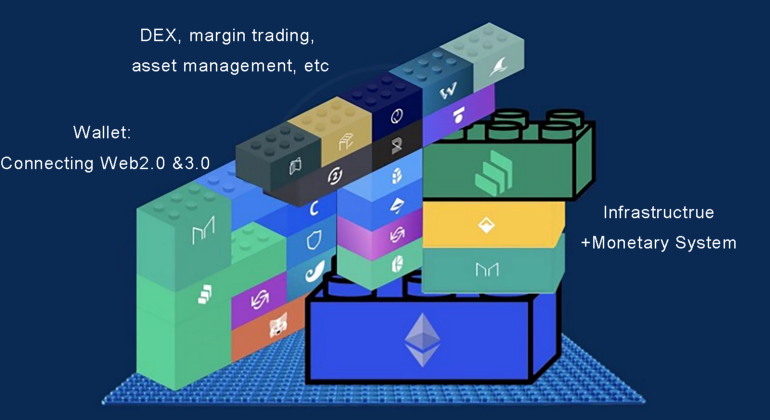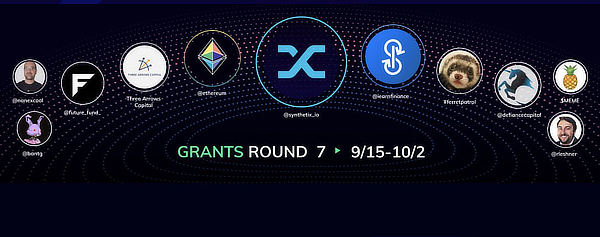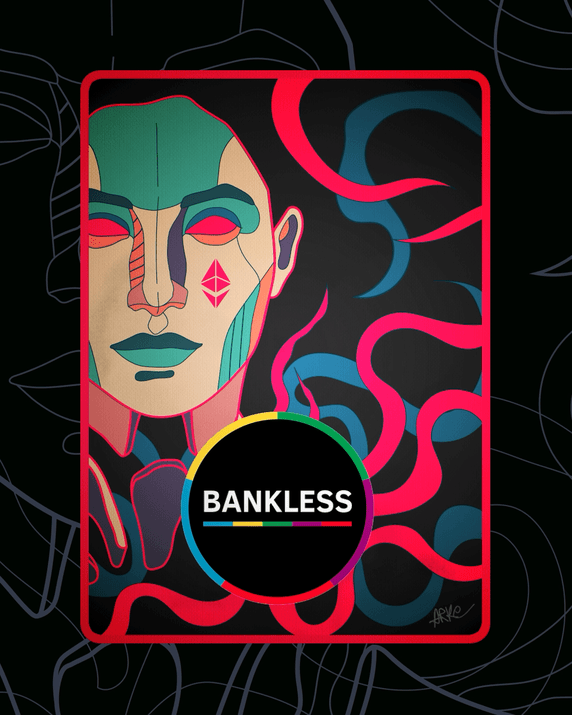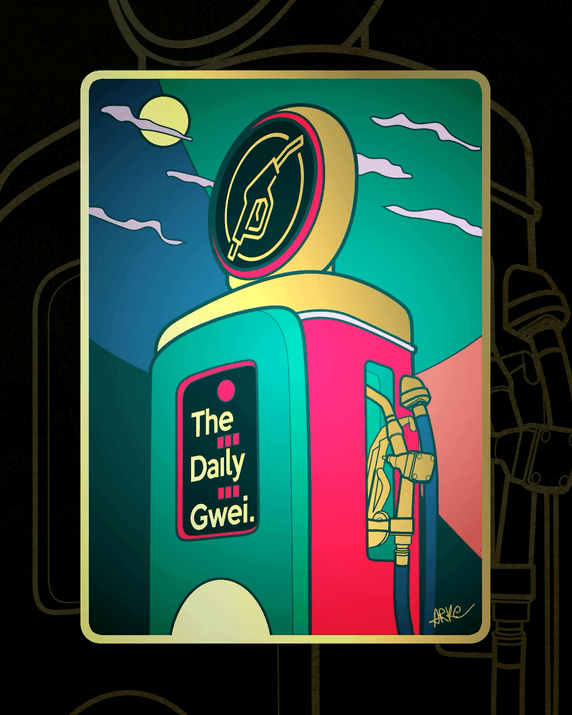Ethereum’s decentralized finance is ready to grow beyond its sandbox: with a dense network of financial primitives, it’s now easier than ever to harness DeFi for other ends, such as to replace a predatory relic of our past like the lottery, still insanely popular and detrimental.
With this story, I’d like to take a step back and adopt a macro perspective on Ethereum. So far, my interest mostly revolved around decentralized finance, as it drove the innovation over the last couple of years.
Yet, I believe we’re reaching the next step of the growth of the incredible human coordination experiment that is the Ethereum network: the lego blocks provided by DeFi are now mature enough to be harnessed for other ends.
Indeed, we’re now seeing how these streamlined value capture and exchange devices can be harnessed to facilitate the creation of engaged communities or sustain the commons. So this time, instead of what or how, let’s ask why? After a quick reminder on the key benefits delivered by DeFi legos, we’ll look at a few projects harnessing them to flip the table in their respective domains.

DeFi’s Legos: The core building blocks
The myriad of decentralized financial services available on Ethereum demonstrated the benefits of what I like to call “pragmatic values”: transparency, accessibility, accountability, and interoperability. Why pragmatic? Because withholding them is not a matter of goodwill of the system’s participants, they are enforced by default and continuously as long as the network is operating.
If you ask your bank how your money is invested, you get an answer you can trust or not. Verifying it involves inquiries from your end. On the other hand, you don’t ask Yearn where your money is: you see what it’s doing at all times, and this information is reliable and unfalsifiable. It’s a fundamental change in the relationship - the user of a DeFi service is not a mere “customer”.
Info
☝ This is what the term “trustless” usually refers to.
So let’s take a minute to unpack these core pragmatic values:
Transparency: By default, transactions on the Ethereum network are public. For DeFi, this translates into very concrete benefits - for instance, volumes observed (on the chain) on decentralized exchanges tend to be much more realistic than volumes reported by centralized exchanges (tracked in their internal database).
Accessibility: To use a DeFi service, such as an exchange or an asset management system, all you need is an Ethereum wallet and a device with an internet connection. On unstoppable services like the DEX Uniswap, there is no way to blacklist an address from using it. This has obvious benefits for populations usually discriminated against by financial services operators, such as gamblers, sex workers, or foreigners.
Interoperability: DeFi services are like lego blocks, they are open source so that they can be improved and built on top of. It enables rapid innovations as new projects can quickly deliver value by assembling several existing services in new ways. Everyone can check their code and easily contribute
Minimalism: Ethereum is a network designed for resiliency and it comes with interesting consequences. With a highly redundant infrastructure where bandwidth and storage capacity are limited, successful projects tend to be those able to reduce or avoid unnecessary complexity.

The DeFi ecosystem delivered a range of services thanks to which anyone can buy, sell, secure, exchange tokens in a decentralized fashion. They also normalized behaviors that were uncommon before, such as staking tokens, borrowing, using leverage, minting synthetic assets, and many other options made possible once assets are tokenized.
Now, as I was saying in the introduction, so far these new legos have been used mostly in a reflexive manner. Now, they are increasingly used to deliver innovative services offering even more possibilities. It’s essential as each new DeFi layer enables many more use cases outside of finance.
Fixing a detrimental societal institution using DeFi’s legos
Let’s start with the obvious and trickle down from here: fixing the lottery. As you probably already know, lotteries are poverty traps sometimes described as an exploitative tax on the poor. Their public is predominantly poor, and overall the lottery is not helping with their budget. Even with a lucky outcome, other issues arise sometimes leading right back to the starting point.
The issue with the lottery has many roots, including the fact that they are usually owned or operated by national governments. The good news is that DeFi can deliver the core element of the lottery - the prize - in a much more sustainable manner.
Indeed, to deliver a jackpot, you need some form of prize. Current lottery models pool together contributions from everyone to return it to one player, minus the cost of the operations and a fee: money is “burned” within the base loop because of the infrastructure required to run the lottery.
DeFi can do much better on both fronts. First, for the prize: instead of a net-loss system, PoolTogether provides a no-loss lottery to its players. The gist is simple: they are not buying a ticket but instead depositing stablecoins into a pool. Assets from all players are used to produce a return using the decentralized lending markets. The winner earns the interest generated by the whole capital over the period, and everyone gets back their initial investment.
It also comes with many improvements over legacy lotteries infrastructure: using Ethereum tokens to represent lottery tickets comes with additional benefits:
- Efficiency - drawing the winner and paying the prize is much faster, public, and verifiable by anyone.
- Traceability - every operation is public and auditable, making it easier to prevent frauds and abuses.
- Accessibility - all you need is a wallet!
The lottery example is essential to better understand “DeFi+” use cases. DeFi by itself is amazing. But using DeFi to replace predatory societal infrastructure? Sounds like even closer to its reason to be! We’ll explore this theme further by looking at the funding of public goods.
Enabling sustainable commons: Gitcoin
For decentralized DeFi projects, the community is key as we’ve seen with Yearn Finance. On top of their role of driving the project development and growth, communities also frequently deliver key resources, such as dashboards, calculators & diverse tools to facilitate the tracking and management of positions, like Zapper, DeFiSaver, or Zerion.
At the macro level, the main tools used to track the overall growth of the industry also stem from the community, such as DeFillama, YieldFarmingInfo, or YieldFarmingTools. The development of such services is usually fueled thanks to community donations.
To facilitate the discovery and funding of such projects, there is a platform harnessing the possibilities offered by Ethereum to improve public good funding: Gitcoin. Gitcoin streamlines the creation of “Grants” to collect donations for given projects and communities. It makes the most of Ethereum core attributes:
 ◎ The last Gitcoin grants round
◎ The last Gitcoin grants round
- All donations are public and transparent, making it easy to measure and track contributions.
- Projects can be funded with common Ethereum-based tokens, usually stablecoins such as DAI.
- While the community is the main driver of contributions, Gitcoin uses a system called quadratic funding to balance contributions. Each round, it matches contributors’ donations thanks to an additional budget.
- The budget is provided by donors from the ecosystem. While it used to be mostly large Ethereum-based companies, a new type of sponsor is emerging: treasury funds of DeFi projects. Indeed, some key DeFi players like Yearn Finance voted to allocate a portion (1%) of their protocol income to fund Gitcoin grants.
While there is still room for improvement - and Gitcoin keeps getting better with every new matching round - it’s already a critical part of the infrastructure used to fund the commons on Ethereum. It really streamlines the process of collecting donations for community-driven projects. We use it for the BanklessFR newsletter along with other sources, and it’s part of what is enabling us to deliver a high-quality yet free newsletter.
Info
The latest Gitcoin grants round just started. You can give to support your favorite projects with an additional matching until December 17. Allow me to suggest a selection of people documenting DeFi in non-English languages - just like I try to do with French.
If you’d like to support French DeFi particularly, feel free to check the BanklessFR & DailyGweiFR grants - a pair of newsletter offering two different takes to learn about DeFi, in French.
Can Ethereum help art markets be more transparent and fair?
Another subset of the Ethereum ecosystem has been delivering incredible value for community building lately: non-fungible tokens (NFT). While the term is a mouthful, the base idea is actually quite simple: NFTs deliver another level of digital scarcity.
Note
You’ll find a detailed explainer on NFT two years ago, still relevant and accessible for newcomers: Non-fungible tokens explained with Blastoise and Charizard.
Paired with DeFi, NFTs are now enabling new forms of community interactions and fundings. Using self-serve platforms, artists and communities can autonomously create and sell NFTs with services streamlining the process like Rarible. Thanks to their programmable nature, NFTs enable new re-distribution models such as a contribution on secondary market purchases. Finally, since they live on the Ethereum blockchain, NFTs also provide a transparent history of ownership and previous prices.
Yet again, thanks to Jon (@OtherBright), BanklessFR has been exploring this new frontier too. Thanks to a collaboration with the artist Arke, we’ve released a NFT tied to the newsletter’s content. I’ve asked Jon to share some pointers on the experiment:
With BanklessFR and The Daily Gwei FR we are trying different experiments.
 ◎ The first BanklessFR NFT produced by Arke
◎ The first BanklessFR NFT produced by Arke
With Arke, we started with the sale of a BanklessFR NFT, representing the newsletter BanklessFR. This collectible card, available in 40 copies, was successfully sold at 0.15 ETH each. We shared the profits with the artist. We included an article that can be unlocked at the time of purchase, 24 hours ahead of readers who do not have the card. This distribution model is clearly innovative, but in my opinion requires to be developed.
Our second sale, different from the first, still for BanklessFR, illustrated an article, and offered 10 copies of the card, at 0.3 ETH per unit. It also contained an article that could be unlocked 24 hours in advance. The latter worked much less, certainly because of a relatively high price, despite a rarity 4 times greater.
 ◎ Another NFT released for the FR adaptation of the Daily Gwei
◎ Another NFT released for the FR adaptation of the Daily Gwei
The last sale concerns the launch of The Daily Gwei FR. We published 50 copies of a card representing the newsletter. We haven’t sold one yet, 0.05 ETH per card, 50 cards available. We will modify this sale to continue the experience.
We have other ideas in mind, here the experiments are relatively simple, but much more complex systems should be implemented. I think we should insist on funding from gitcoin and clr.fund, before accelerating on the NFTs side.
Together, these services provide innovative tools to build and grow communities. Thanks to the disintermediation, NFTs put artists back at the center of the stage. We’re seeing more and more instances of collaboration between an artist and a community, like we did for BanklessFR.
As we’re entering an age of renewed excitement, especially for people outside the space, make sure to direct newcomers to reliable resources: how about Bankless’s getting started guide?
The markets blackhole
Taking a step back, the trajectory of the last couple of years of development makes even more sense. The financial functions were the necessary first steps, as they now operate as primitive enabling more intricate interactions.
At their very base, markets simply are distribution/allocation mechanisms. So far, in the world of old finance, we’ve let technocrats design them, to the benefits of the most connected and rich participants. With DeFi, we’ve experimented with our own ways of creating markets. We’ve already seen migrations of billions over a few days to chase a given incentive such as Uniswap UNI mining or the one-week YFI mining.
Shortly put, our finance is already strongly superior to any meatspace counterpart. We can create immense and healthy markets in days. Have derivatives and other options for the next one. Leverage soon after. & all/most of this delivered in an unstoppable fashion.
If you’re not a trader, this might sound like tooling overkill. It’s really not. Picture finance like a base layer underlying all the others. Whatever your goal is, your system will probably have to manage some finite resources, so you’ll need markets.
The good news is that our markets - our base layers - are more efficient than any other so we can reasonably expect a compounding impact of this increased efficiency as we move down the stack. Simply put, finance is the first battlefield we’ve won: the decentralized approach succeeded and delivered a superior infrastructure without equivalent. I can’t wait to see the next!